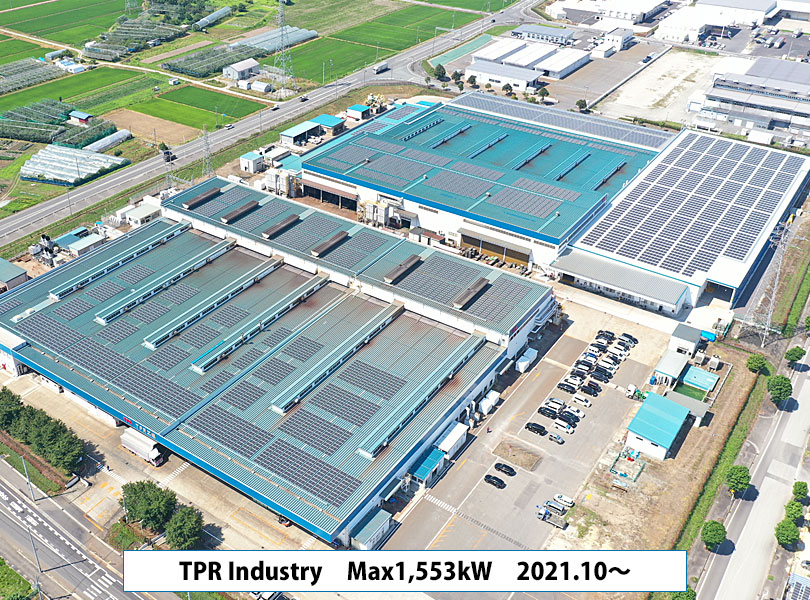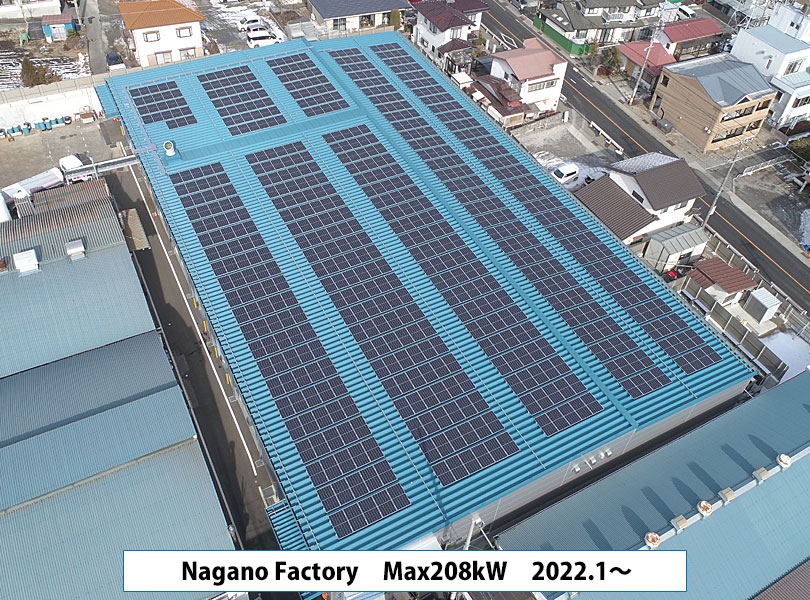Reduce CO2 Emissions (Output Level)
Effort Status
- Regarding the reduction of CO2, which is one greenhouse gas (GHG), our company, as a medium to long term challenge for our environmental policy, had until FY2021 set a target of "30% in FY2030 versus FY2013 (output level)", however, taking into consideration the government's modified higher target last year and the societal situation, we launched our carbon neutrality project in December 2021.
- The target incorporated into the FY2022 environmental policy is "aim for carbon neutrality in 2045 following our mid term target of 50% reduction in FY2030 versus FY2013 (total emissions and output level)".
- In the past, our target was set only for output level, but our target now also includes total emissions, which demands a more certain improvement result. The results up to FY2021 are as per the graphs below.
- Nagano and Gifu Factories' results up to 2020 have been recognized for 7 years running as "S Class" (a business with excellent energy savings) in the Ministry of Economy, Trade and Industry's Regular Report on the Energy Saving Law (output level basis).
- In FY2021, although the output level improved on prior year in line with increased product demand, the total emissions has worsened.
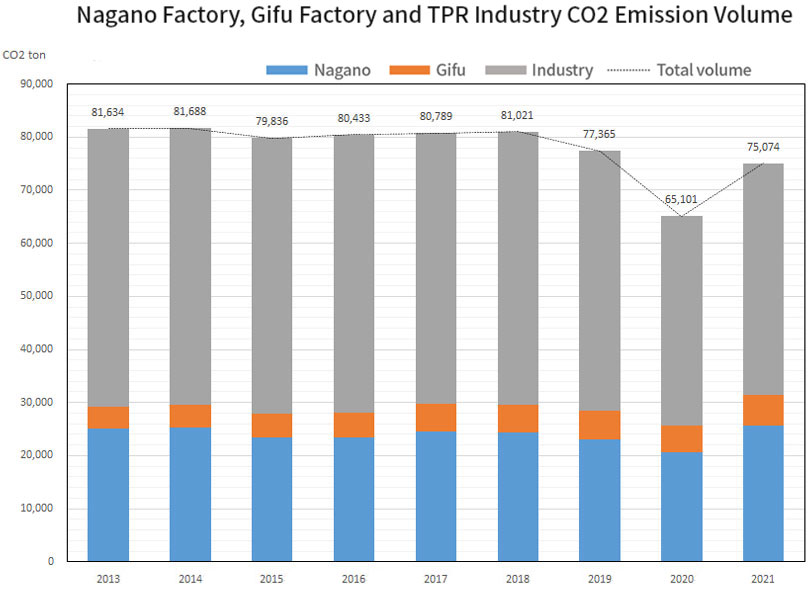
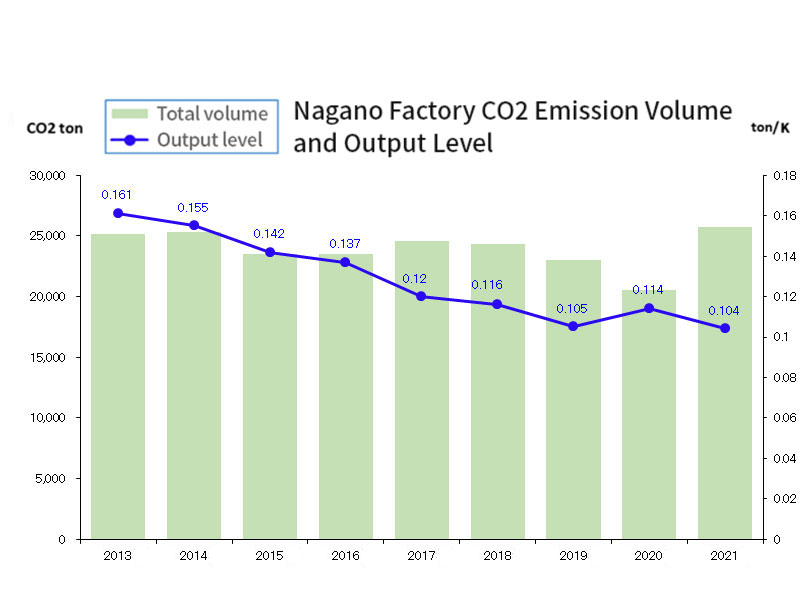
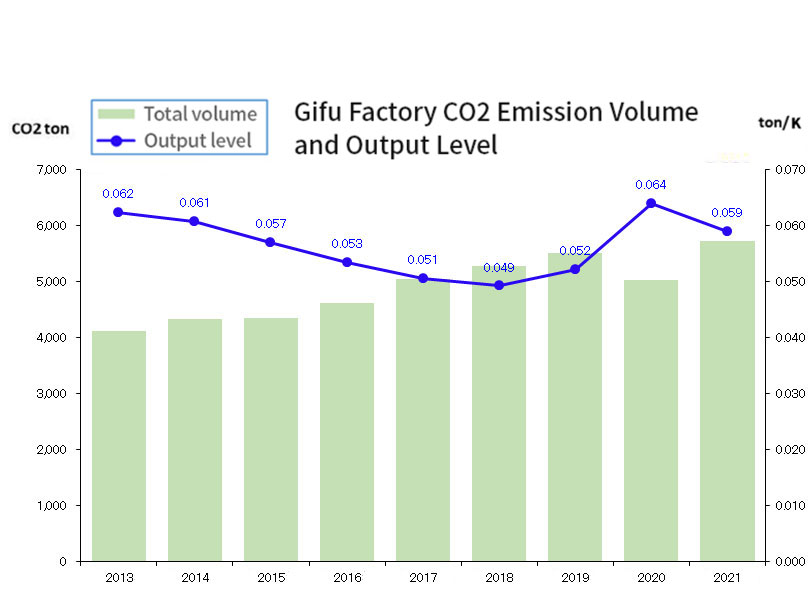
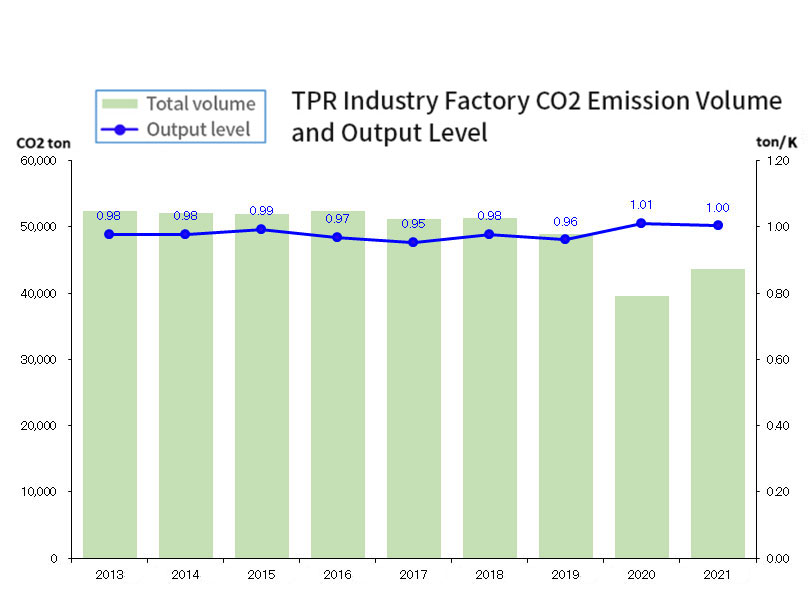
- All business locations hold an "Environmental Conservation Meeting", extracting specific improvement ideas relating to power and fuel for factory infrastructure, products and production facilities, as we engage with CO2 emissions reductions.
- Also, improvement ideas are shared at the "Company-Wide Environmental Conservation Meeting", and we are focused on promoting improvements so results can be seen across the whole of our Group.
Carbon neutrality efforts
- Currently, our company has targeted our carbon neutrality efforts into scope 1 and scope 2. A reduction plan has been created for each factory up to 2045, and our effort is on the basis of a clear "what will be done when". Also, side by side with each factory's output level improvement, we are promoting the individual itemized improvements such as improvement item, CO2 reduction amount, improvement person in charge, improvement cost, timing plan, etc., in our "CO2 reduction master plan".
- However much we improve, it is impossible to have zero use of electricity and fuel. So, as an alternative plan, we are also progressing the introduction of solar power generation and purchase of non-fossil fuel certificates/J credits.
Specific examples
Example 1 CO2 reduction through fuel improvement
Using the opportunity of work being done on natural gas piping around the factory, we converted to low-CO2 emissions natural gas for winter heating/surface treatment boiler fuel, etc.
CO2 reduction effect… 27% reduction
Example 2 CO2 reduction through sintering factory melting power reduction
Changed the coil used in the high frequency melting furnace to a coil with high energization efficiency, successfully reducing electricity usage.
CO2 reduction effect… 81 tons reduction per year
Example 3 Electricity/CO2 reduction by changing to LED lighting
CO2 reduction effect… 55 tons reduction per year
Example 4 Solar power generation effort
- Solar power generation business is ongoing at our group company TPR Total Service Co., Ltd.
- Solar power generation for self-consumption, using factory roof space.
